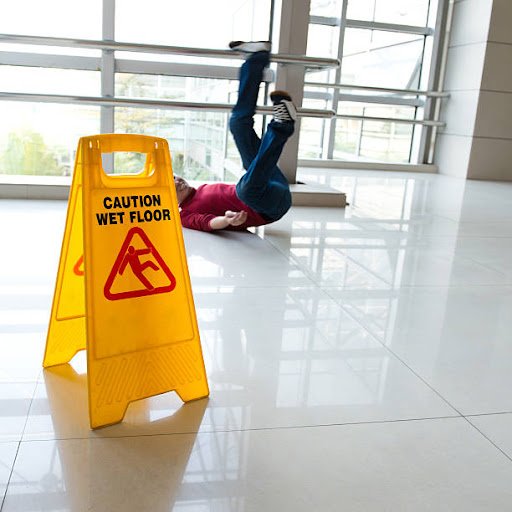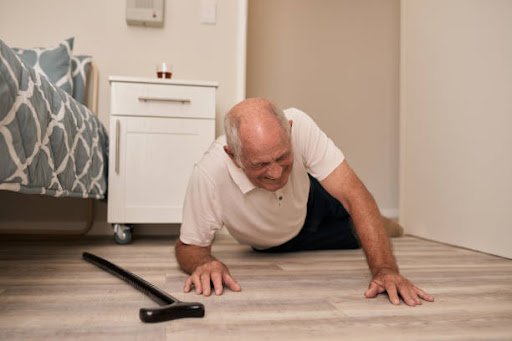“An ounce of prevention is worth a pound of cure” – Benjamin Franklin; Founding Father of America
According to the World Health Organization, falls are one of the major public health problems around the world. It is estimated that about 684,000 fatal falls occur each year thereby making it the second leading cause of unintentional injury death, after road traffic crashes.
Fall can be described as an event that unintentionally causes a person to rest on the ground or lower level. Fall can happen to anyone at any time. However, older people are more likely to fall and this can become a recurring issue and therefore result in injuries which include head injuries or hip fractures. In older people, falls can be particularly problematic because osteoporosis is a fairly common problem.
Just as in the case of Donald, a retired school teacher who was placed in a care home by his family. One night, he fell off his bed while trying to reposition himself on the bed. Unfortunately, this incident got his hips fractured and affected his mobility. This necessitated the care home manager to review his care plan (with his consent) to include a bedrail for safety and eliminate the chances of another fall
Dangers of Falls in the Elderly:
Falls in the elderly can have serious detrimental consequences. They are:
- Physical injuries: Falls can lead to various physical injuries, including fractures (especially hip fractures), sprains, bruises, and head injuries. Fractures, in particular, can significantly impact mobility and independence.
- Loss of independence: A fall can result in a loss of confidence and increased fear of falling again. This fear may lead to self-imposed activity restrictions, reduced mobility, and a decline in overall independence.
- Functional decline: Injuries from falls can lead to a decrease in physical function. This decline may affect an individual’s ability to perform activities of daily living, such as bathing, dressing, and cooking.
- Hospitalization: Severe injuries sustained in a fall may require hospitalization, surgery, or other medical interventions. Hospital stays can be stressful for older individuals and may lead to complications.
- Financial loss: Falls often result in increased healthcare costs due to medical treatment, rehabilitation, and long-term care needs. This can place a financial burden on the individual and their family.
- Psychological impact: Falls can have psychological consequences, including anxiety, depression, and a fear of falling. These emotional challenges can further contribute to a decline in overall well-being.
- Decreased quality of life: The combination of physical injuries, fear of falling, and potential lifestyle changes can lead to a decreased quality of life for the elderly individual.
- Secondary health issues: Immobility resulting from a fall can contribute to secondary health issues such as muscle weakness, joint stiffness, and an increased risk of other chronic conditions.
- Increased risk of future falls: Once an individual has experienced a fall, their risk of falling again is often increased. This can create a cycle of recurring falls and further complications.
- Social isolation: Fear of falling and mobility limitations may lead to social isolation as individuals become less inclined to participate in social activities and events.
What Might Cause a Fall?
There are many causes of having a fall. These include:
- Old age: Falls are more predominantly associated with older people according to the natural ageing process. This is because Older people may have:
- balance problems and muscle weakness
- visual impairment
- a long-term health condition, such as heart disease, dementia or low blood pressure (hypotension), which can lead to dizziness and a brief loss of consciousness
- polypharmacy – and the use of certain medicines
- Old age: Falls are more predominantly associated with older people according to the natural ageing process. This is because Older people may have:
- Environmental conditions: Wet and slippery floors, poorly illuminated rooms, obstruction on walkways, loose rugs and carpets, etc.
- Fall while doing maintenance work: Seniors can fall off the larder while doing maintenance work
- Uncontrolled speed or motion while hurrying to a place
What should I do if I fall?

If you fall, it’s important for you to keep calm. If you’re not injured or hurt in any way and you feel you’re able to get up, it is advisable you don’t get up immediately. After getting hold of yourself, move your hands and knees and look for a stable object such as a table, bed or chair. Put your both hands on the furniture to support yourself and when you feel settled and ready to get up, gently do that before continuing with your remaining daily activities.
If you discover you are hurt and are not able to get up by yourself, call for help as quickly as possible. You can do this by banging on the floor or wall and if possible, move closer to your telephone and call 999 to request for an ambulance. Do your best to remain comfortable as much as possible and also try to change your position to relieve pain on yourself until help comes.
It is advisable you get a personal alarm system so that you can signal for help in the event of a fall. It is also helpful to keep your mobile phone close to you or in your pocket so you can call for help with it quickly. If you’re living with or caring for an elderly person, read what to do after an incident.

Steps to Reduce Fall Incidents
The following simple measures can help prevent falls in the home.
- Stay physically active
- Try balance and strength training exercises
- Fall-proof your home
- Ensure your eyes and hearing are tested for any defect
- Look out for side effects of any medication you are taking
- Get enough rest and sleep
- Stop or limit your level of alcohol consumption
- Stand up slowly from bed, especially at night
- Use non-slip mats in the bathroom
- Mop up spills to prevent wet, slippery floors
- Ensure all rooms, passages and staircases are well-lit and uncluttered
- Get help when lifting or moving items that are heavy or difficult to lift
Symptoms to Look for After Fall
Pain and Tenderness: There is always some level of pain associated with every fall and some tenderness in the affected area. The pain may vary depending on your fall magnitude and this may indicate possible fractures, sprains or other forms of injury. It is important to quickly access the affected area to determine the appropriate medical assistance that will be given.
Swelling and Bruising: There may be swelling and bruising after a fall, especially in the most affected area. Swelling and bruises could mean severe injuries that require urgent medical attention and assessment. These symptoms should not be overlooked for any reason.
Difficulty in mobility: Falls, especially severe ones, result in difficulty in mobility and this is a result of fall-related injury. If you or someone else experiences difficulty in mobility, it is important not to take it for granted, as delaying medical attention may worsen your health.
Head Injuries: For elderly individuals, head injuries are one of the symptoms to look out for after a fall. Symptoms such as dizziness, persistent headaches, confusion, or loss of consciousness should never be underestimated. Any indication of a head injury demands immediate medical attention, as it could be indicative of more severe underlying issues that need to be managed urgently.
Changes in Behavior or Mental State: After experiencing a fall, elderly individuals may exhibit changes in behaviour, which could be concerning. Increased confusion, memory problems, mood alterations, or unusual behaviour might point to a head injury or an underlying medical condition. Pay close attention to such changes and seek medical advice to determine the cause and provide appropriate care.
Numbness or Tingling: Numbness or tingling sensations in the extremities after a fall could suggest nerve damage. Such symptoms should not be ignored, as they might indicate more severe underlying injuries. Seeking prompt evaluation by a healthcare professional can help assess the extent of nerve damage and initiate suitable treatment to prevent further complications.
Difficulty Performing Daily Activities: Struggling to perform routine tasks like walking, standing up, or getting out of bed might indicate an injury or an underlying health issue. If you – or someone you know experience difficulties performing daily activities following a fall, it’s crucial to seek medical attention. Early intervention and proper rehabilitation can aid in the recovery process and prevent potential complications.
Loss of Bladder or Bowel Control: Incontinence following a fall might be a sign of a spinal injury. This symptom demands immediate medical attention, as spinal injuries can have serious consequences if not promptly addressed. Seeking urgent evaluation and treatment can improve the chances of recovery and prevent further damage
Safety in the elderly is crucial. All stakeholders in the health and safety of seniors should work hard to ensure that their chances of a fall are as slim as possible. When they fall, it is very important that assess them promptly and determine the action to take. Remember that prompt relevant intervention after a fall can make a big positive difference in their recovery. At Balance of Creation, we take the health and safety of everyone especially the seniors very seriously. We have several courses that train people on how to effectively care for the elderly and also become the best hands in Care and Support. To see these courses, click on www.balanceofcreation.online.






